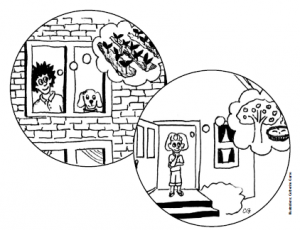Growing Behavior Change

Originally appears in the Summer 2010 issue
Have you tried to get young people to switch off the lights when they leave a room or spend less time on the computer and more time outside, or use a refillable water bottle or eat more vegetables? Encouraging individuals of any age to change their behavior is not an easy task. Yet fostering changes in individuals’ behaviors is often an important goal for environmental educators.[1]
Intuitively, many environmental educators believe that by increasing students’ knowledge of environmental issues or by raising their concern about the environment, they will be more likely to act in environmentally sustainable ways. It has been about 20 years since this intuitive model was questioned by Hines et al (1987) and subsequently, Hungerford & Volk (1990). Consider the following example: Many individuals struggle to drive less. These individuals know that fossil fuel use and automobile emissions contribute to global climate change, drive wars and tensions in the Middle East, and contribute to health problems like asthma. But does this knowledge translate into driving less or using alternate modes of transportation? Often the answer is no. Something else is needed to propel these individuals into action. But what?
This content is restricted to subscribers only.
If you are not yet a subscriber, please consider taking out a subscription here.
If you are an existing subscriber, kindly log in or contact us at info@greenteacher.com for more information.





